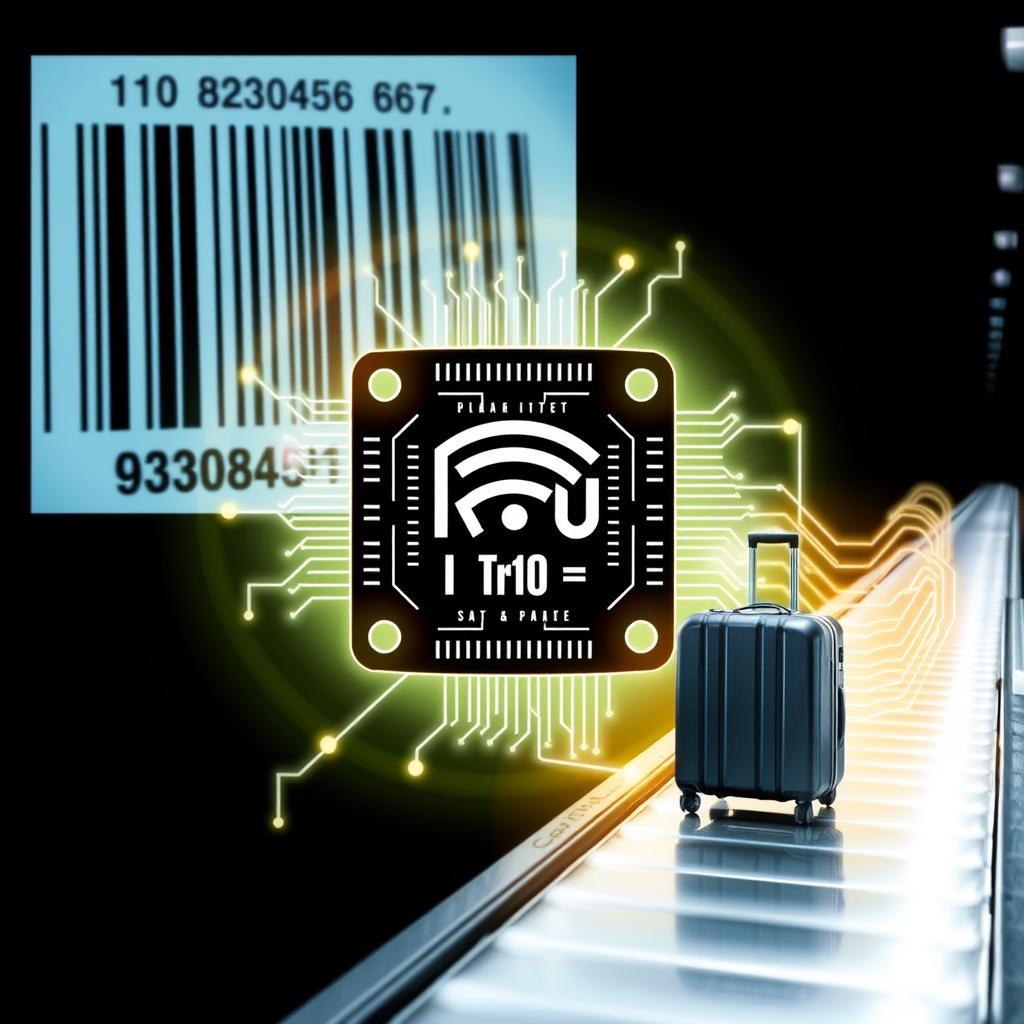Airlines and airports can track bags using several different technologies. Here are common options:
- Barcode Scanning: Most baggage tags have a 1D barcode (Interleaved 2 of 5) encoding the 10-digit license plate. Conveyor-mounted scanners (laser or camera arrays) or handheld readers scan the barcode as the bag moves through the system (iata.org). This is the standard today: it’s simple and reliable when the tag is intact.
- RFID (Radio-Frequency ID) Tags: Many airlines are adopting passive UHF RFID tags on baggage. A small chip is embedded in the tag that can be read by RFID readers at a distance and without line-of-sight. IATA’s recommended practice (RP1740c) specifies this as a global standard. RFID can automatically scan many bags at once and works even if the barcode is obscured. In practice, RFID yields higher read rates than optical barcodes (rfidjournal.com)(iata.org). For example, Delta Air Lines reports near-100% read rates using RFID at key points. (Because of its benefits, IATA has set a goal to have 80% of baggage covered by RFID in the coming years (rfidjournal.com.)

- Optical Character Recognition (OCR): Some systems use cameras with OCR software to read the printed license plate number or flight number on the tag if the barcode cannot be scanned. For instance, a high-speed camera may capture an image of the bag tag and OCR can decode the text digits. This is often used as a backup if the barcode is damaged. IATA notes that “laser or image optical scanning” (including OCR) is one method to record bag movements (iata.org).
- Manual or Hand-logged Records: In airports without full automation, ground staff may track bags by hand. For example, a handler might manually log the bag tag numbers when moving bags between flights or when loading carts. While not ideal, manual scanning or logging can still fulfill tracking requirements when technology is limited. Any such manual record becomes part of the baggage inventory.
- Bluetooth/NFC Trackers: With smartphones and Bluetooth low-energy tags (like Apple AirTags or Tile trackers), passengers can add a personal tracker to their bag and watch its location via an app. However, these consumer devices are not integrated into the airline’s official tracking system. They may help the passenger find a bag within an airport, but airline systems still rely on the methods above (barcode, RFID, etc.) to meet IATA standards (iata.org).
- Future IoT Devices: Emerging ideas include putting small GPS or cellular trackers in luggage or using airport Wi-Fi tags. These are mostly experimental now. For instance, Wi-Fi or GPS devices could theoretically report a bag’s location anywhere, but such devices need batteries and currently airlines rarely embed them directly in checked baggage (security and cost issues).
Overall, many bags today are tracked with a combination of barcode scans and increasing use of RFID. For example, scanning at check-in and loading might use barcode scanners, while major hubs with RFID portals automatically read tagged bags on belts. The industry recognizes that mixing technologies (barcode, RFID, camera, manual) is necessary to meet the tracking goals. According to IATA, typical bag tracking is done by laser/camera barcode scanning, manual logs, RFID scanning, OCR, and even Bluetooth detectors (iata.org). Each airport or airline chooses the mix that fits its infrastructure, but the end result is the same: the bag gets recorded in an electronic system at each key point, so its whereabouts are known.

